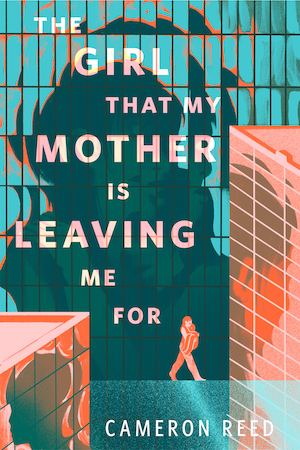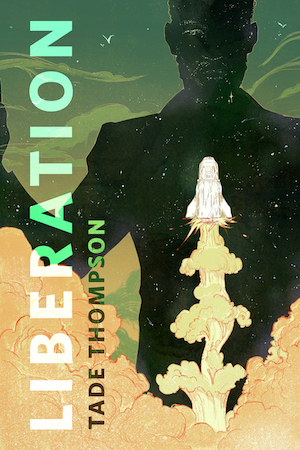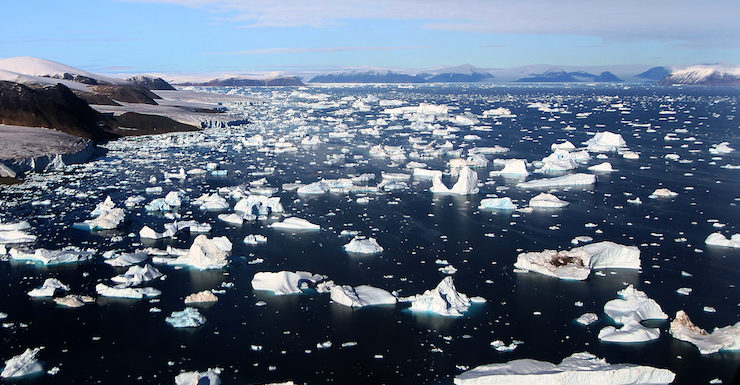The logical reaction to learning about climate change is terminal despair. I realized this when I first learned enough of the basic physics of climate change to start including it in my physics classes, about ten years ago. Although the topic and its ramifications were keeping me up at night, I didn’t immediately realize that it would, naturally, have the same effect on my students. They reacted with despair, which in some cases mutated to anger, apathy, even denial. Knowing that governments and corporations were dragging their feet didn’t help. Even those who had wanted to do something about it found their enthusiasm waning in the face of a lifetime of experience being at the receiving end of other people’s agendas.
I was motivated to include climate change in my curricula because of an ethical imperative. If young people were to be left such a terrible legacy, it was the least I could do to help them make sense of the scientific basis of climate change. As a particle physicist, I had obsessed over the secretive and anomalous behavior of quarks. But quarks shed no light on the vibrations of the carbon dioxide molecule or the ambiguous role of clouds. To understand the basics of climate change, I had to learn physics at a new scale and level of complexity, a fascinating and ongoing task. Still, I had figured out the essential material and woven it into my courses. I teach at a vibrant liberal arts state university that had held the nation’s first ever interdisciplinary climate teach-in just a year before, in 2007, which, in fact, had inspired all this effort. Now my attempt to teach climate physics had turned out to be a dismal failure. Because what was the point of understanding the stuff if it paralyzed you into inaction?
And yet college professors are supposed to tell the truth. I had to be the bearer of grim tidings; there was no way of getting around that. I had to engage and help hone the students’ critical thinking skills, help them navigate the evidence and reach the depressing conclusion on their own. But was it fair to leave them in a state of such existential misery? Doom-and-gloom did not inspire the action that was so urgently needed. I worried about this. Scientists are supposed to teach science and stop there.
But the fact that I am an intellectual mongrel came to my rescue. I was raised in a family in which parents, siblings, cousins, aunts, uncles, grandparents, family friends and various non-human relatives encouraged and engendered a transdisciplinary, polyphonic, kaleidoscope view of the world. As a young adult born and raised in India, I had gradually discovered that boundaries were porous, semi-permeable, contextual things. Having to choose between the sciences and the arts and humanities at the end of tenth grade was a difficult decision. I remember being kicked out of the Arts Faculty library at Delhi University because I was a science student.
Yet life in India, to the observant, was a parade of phenomena that were constantly enmeshed, interlocking, dynamic. As a teen I had been part of a unique environment-social justice action group that had no hierarchy, was governed by consensus wrought through vigorous argument, and which achieved its aims through a combination of dogged fact-finding and sheer effrontery. Through this experience it had gradually become clear to me, although it would take years to articulate it, that a bird, or a forest, or a human transcended the divisions of discipline. The river Yamuna (at that time less of a sewer than it is now) was simultaneously a subject of poetry, story, and song as it was subject to the laws of hydrodynamics.
Years later I washed up on American shores, completed a PhD, returned to India and then back again, and dropped out of academia for a decade. Negotiating a difficult marriage in an intellectual desert, my one consolation was the privilege and joy of looking at the world afresh, through the eyes of a small child—my daughter. The old, multi-ocular vision of the world that I’d lost came back. My story-telling skills, rusty but still sinewy through years of practice with my younger sister, also returned. So I became a writer. Returning to academia after a decade was a surprise and a delight, but the writing demon was loosed forever.
So here I was, pondering the failure of my attempt to teach climate change in a physics classroom. My teaching approach was eccentric enough already—I wanted students to feel physics, not merely study it, and my pedagogical experiments included such licentious activities as physics theater and storytelling. Often scientists tend to look upon such exercises with deep suspicion, equating them with a lack of seriousness and rigor. However my students know that if anyone is nitpicky and insanely detail-oriented while teaching and grading, it is me. Any liberties with the “equals” sign in an equation, or attempts at mathematical stream-of-consciousness, are rewarded with a circularly symmetric grade. I appreciate genuine ambiguities where they exist, but am as allergic to carelessness with the laws and concepts of the physical universe as an obsessive grammarian might be to a dangling modifier.
I believe in rigor, not rigor mortis. So I decided to apply my transdisciplinary pedagogy to communicating climate change. For this I had to go on my own journey of learning and transformation, confronting alternating waves of hope and despair, fighting my own demons. In 2014 I found myself on the shores of the frozen Arctic Ocean. Here I learned about the sea ice and its rapid retreat, and the physical, ecological, socio-economic and cultural impact on the Eskimo people of the North Shore of Alaska. That their economies depended on the very oil industry that had generated climate chaos was a dilemma they shared with the rest of the industrialized world. But the connections were clearer here, in the great expanse of the tundra. A chance astronomical circumstance—the tilt of the Earth, the angle of sunlight—had created the Northern ice cap, and a people whose language and culture were delicately tuned to their geography. Now the ice and the people were both confronting uncertainty. It became clearer than ever that to understand and engage with climate chaos, we had to go beyond the boundaries of science.
Back in the classroom, I tried my best to dissolve its walls. Inspired by the “six stages of climate grief,” we bookended our scientific explorations of climate physics with the psychological and societal impact of climate change. We discussed openly how we felt as humans, as earthlings, being alive at such a fraught moment in Earth’s history. We raised questions and made connections between climate change and economics and social inequality. I learned that to negotiate our emotional response to climate change, to allow ourselves to grieve the world we won’t have, is the first and essential step toward being able to act. I learned also that we can’t grieve alone, or act alone. A decade after my first attempt, my students continue to teach me in what will always be a work in progress.
I have learned to befriend despair, and its other side, hope. Time and time again, I have to work through and free myself from the trap between Scylla and Charybdis. The freedom is in the realization that I mustn’t take them too seriously. Hope and despair are both motivated by fear, after all. The point is to be wholly and fully in the world, to act from a place of belonging with our human and non-human kin, to live with the kind of richness that comes from a deep entanglement, an ethical centering in the world. To acknowledge fear, despair, hope, is to allow the possibility of journeying through them to the other side. And I haven’t learned that solely from science, much as I love it. I’ve learned it from life, teaching, literature, writing, and the imagination.
Vandana Singh was born and raised mostly in New Delhi, India and currently lives in the United States near Boston, where she professes physics and writes. Her short stories have appeared in numerous venues and several Best of Year anthologies including the Best American Science Fiction & Fantasy and she is a recipient of the Carl Brandon Parallax award. She is the author of the ALA Notable book Younguncle Comes to Town and a previous short story collection, The Woman Who Thought She Was a Planet and Other Stories (Zubaan, Penguin India). Her collection Ambiguity Machines and Other Stories is now available from Small Beer Press.











I applaud the idea of making an academic subject feel “lived in”, even when it is thought to be removed from the messy details of everyday life. I teach college math and statistics, and I try to include case studies that reflect our concerns and social issues (like teaching the technique of statistical Significance testing by examining a case of alleged racial profiling).
The hardest obstacle to overcome with climate change, for those of us old enough to remember before the changes and to recognize what has happened, is our sense of shame: “Why did we let this happen? Why aren’t we stopping it before it gets worse?” Hopefully, Ms. Singh’s example of blending hope with despair will help the rest of us get busy to do what we can to slow the climate upheavals.
Thank you for sharing your story. It’s a challenge faced by all of us who must speak about climate change — which will ultimately be all of us. As a paleontology museum docent and a public relations/outreach person at an organization at the center and forefront of the local sustainability movement, I’m required to proclaim the need and value of action, but I personally feel only despair. There are plenty of action options for people who retain the will to act, and I feel like a cheerleader for them.
But like you, I’ve benefited from an exceptionally interdisciplinary background. Being able to move along the interfaces of science, society’s workings, and the human mind is essential for leaders in all aspects of addressing climate change. Unfortunately, too many people and institutions still define “interdisciplinary” quite narrowly, as I saw in a Cornell professor’s bio three years ago: “The nature of Toby’s work is highly interdisciplinary, affording him the opportunity to collaborate closely not only with other climate scientists but also with colleagues in many other disciplines, including geography, paleoclimatology, and ecology.”
Climate change education is a growing movement, and not only in college. As legislatures and disinformation campaigns work to quell or strip the subject from public school curricula, people are fighting back. The Teacher-Friendly Guide to Climate Change, created by the institution I’m so proud to be a part of, recently made widespread news for our work to distribute it to high schools across the nation, most recently and prominently the whole state of Idaho: https://thinkprogress.org/teacher-friendly-book-climate-science-c3247f09bded/
The fact that climate change has been hijacked for political purposes to push a specific agenda of government control, de-industrialization and reduced standards of living doesn’t help.
@3 hunh?
—-
Dr Singh,
Right now, I’m teaching physics and chemistry at a high school in one of the wealthiest counties in the US, and climate change rarely comes up — I have curricula to get through — but I’ll be offering it as an independent study topic to my AP Physics students. I’ll need to keep them busy after the AP tests in early May.
The way out of despair is to focus on creating alternative energy sources and methods for carbon capture.
There is a lot more that can be done than using wind and solar and making better batteries. The Thorium Molten Salt Nuclear Reactor is a very promising new design that would produce neither fissionable materiel nor radioactive waste; indeed there is some possibility of using these reactors to reduce (“burn”) existing stores of nuclear waste. China is currently in partnership with GE to build this reactor in China. Besides getting China off coal, if use of this reactor becomes widespread it may actually provide enough energy to pull CO2 right out of the atmosphere. There is a process that has been developed called “Supertorrefaction” that processes dead wood into Synthfuels; this would be carbon neutral because dead wood left on the ground slowly oxidizes (in a sense, is slowly burning), releasing CO2 into the atmosphere. Supertorrefaction would make it economical to remove dead wood in areas where it is presently becoming a fire hazard. These are not the only possibilities; they are only good examples of what science and technology can accomplish.
A certain amount of alarmism has been appropriate to alert the public to the dangers. But now that 70% of the public agrees that Climate Change is a problem and that greenhouse gases are the cause, what is really needed is to convince people that a solution is actually possible, if only we make the necessary investment to make these things happen sooner rather than later.